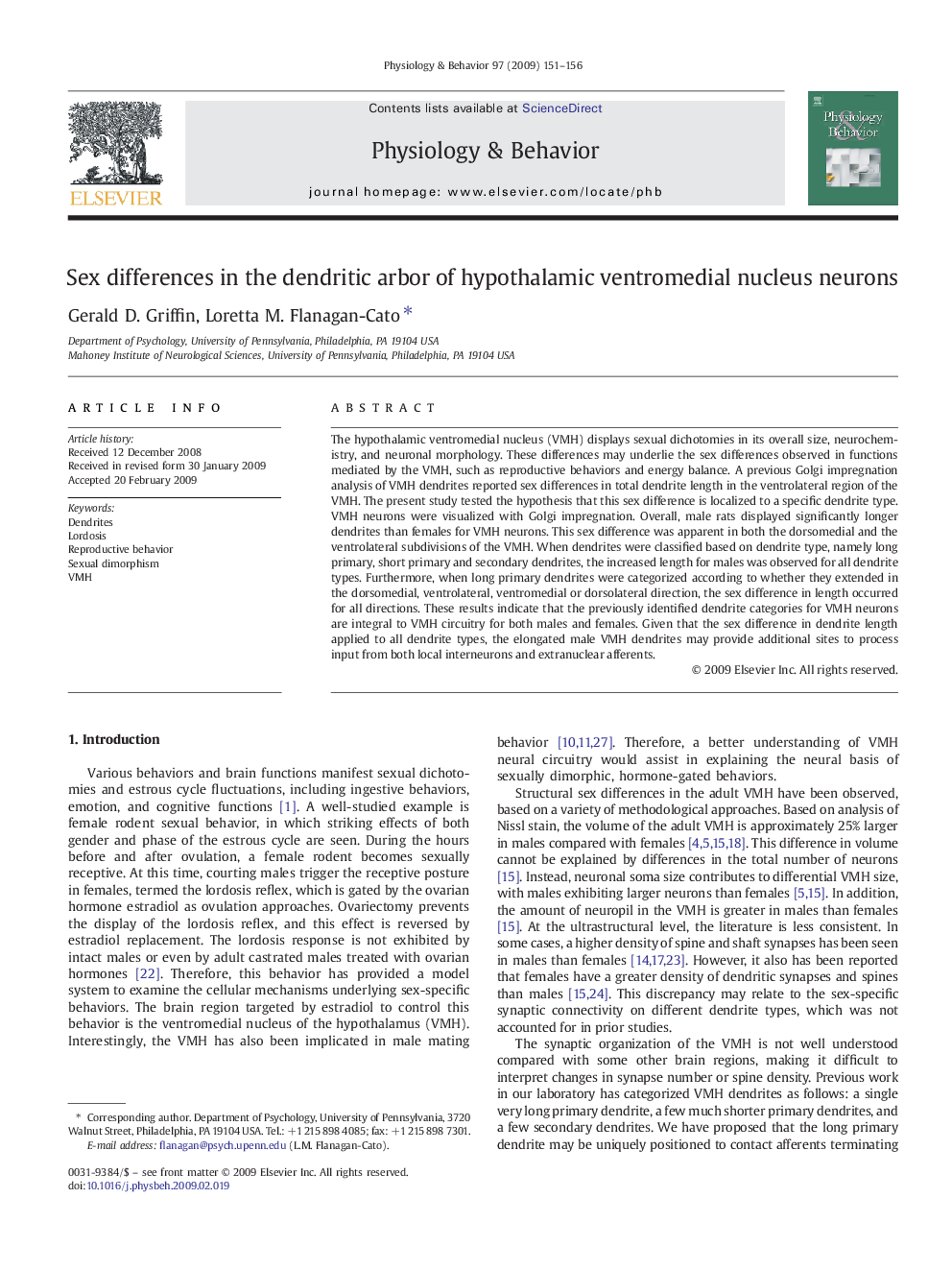| Article ID | Journal | Published Year | Pages | File Type |
|---|---|---|---|---|
| 2845168 | Physiology & Behavior | 2009 | 6 Pages |
The hypothalamic ventromedial nucleus (VMH) displays sexual dichotomies in its overall size, neurochemistry, and neuronal morphology. These differences may underlie the sex differences observed in functions mediated by the VMH, such as reproductive behaviors and energy balance. A previous Golgi impregnation analysis of VMH dendrites reported sex differences in total dendrite length in the ventrolateral region of the VMH. The present study tested the hypothesis that this sex difference is localized to a specific dendrite type. VMH neurons were visualized with Golgi impregnation. Overall, male rats displayed significantly longer dendrites than females for VMH neurons. This sex difference was apparent in both the dorsomedial and the ventrolateral subdivisions of the VMH. When dendrites were classified based on dendrite type, namely long primary, short primary and secondary dendrites, the increased length for males was observed for all dendrite types. Furthermore, when long primary dendrites were categorized according to whether they extended in the dorsomedial, ventrolateral, ventromedial or dorsolateral direction, the sex difference in length occurred for all directions. These results indicate that the previously identified dendrite categories for VMH neurons are integral to VMH circuitry for both males and females. Given that the sex difference in dendrite length applied to all dendrite types, the elongated male VMH dendrites may provide additional sites to process input from both local interneurons and extranuclear afferents.
